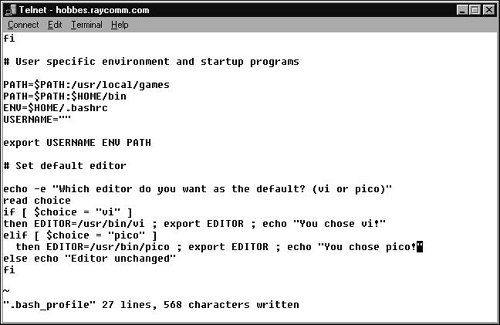Using Input to Customize Your Environment
| Way back in Chapter 8, we talked about setting up your environment variables by customizing the configuration files that run upon log in. You can further customize your environment variables by requiring input whenever a startup script runs. For example, you can set your configuration files (which are actually scripts) so that they request that you specify the default editor for the session (Code Listing 17.5). Code Listing 17.5. When the system asks your preferences, you know you're on top.
To Use Input to Customize Your Environment:
|
EAN: 2147483647
Pages: 251
 the default? (vi or pico)"
the default? (vi or pico)" 
 Tip
Tip